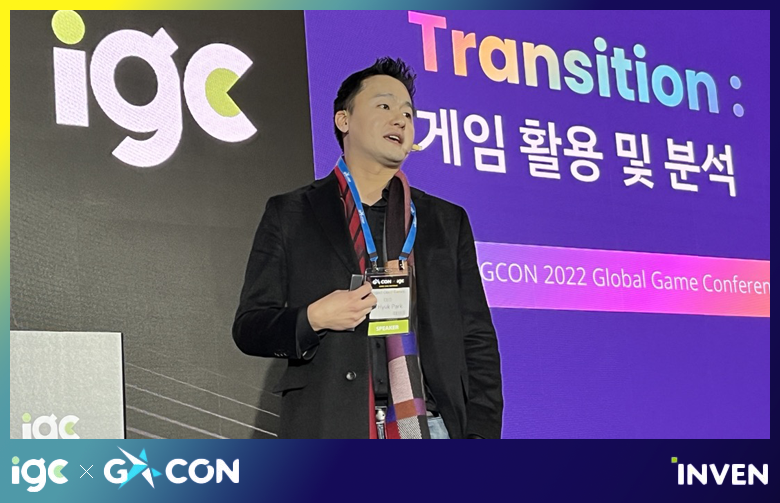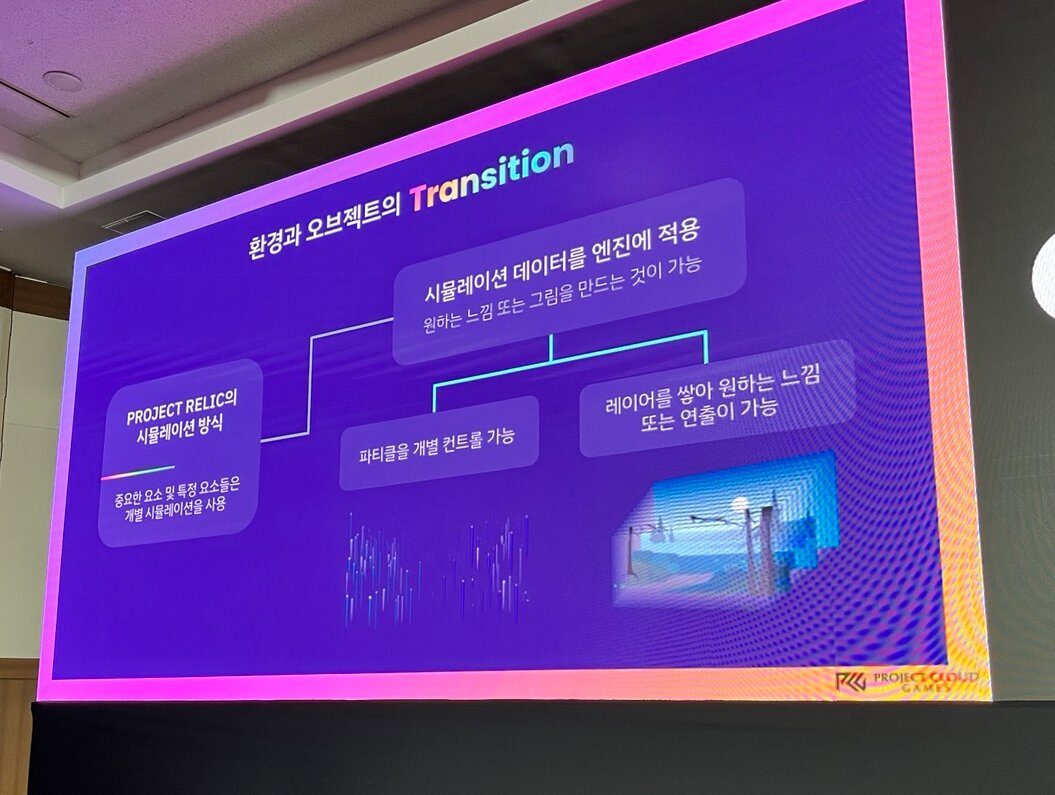topic : Transition: usage and analysis of the game Speaker: Inhyuk Park – Project Cloud Games / CEO Field : Development Now : 11/18/2022 (Fri) 14:00 ~ 14:50 summary : Park In-hyeok, CEO of Project Cloud Games, made full use of his talent, the transition technique, while developing a game called Project Relic. CEO Park, who said he wanted to incorporate all the experience of participating in large-scale video content such as blockbuster movies into the game, was sincere in providing users with a high-quality experience.
■ Blueprint Relic – It’s a fun game when “feeling” is emphasized.
During the conference, CEO Park In-hyuk emphasized the “feeling” as he explained the various transition techniques used in Project Relic, an action RPG genre. He and members of Project Cloud Games said their goal was to give users a certain feel when developing games. I think it happened because I have participated in many video works. Thus, a total of four keywords were explained.
It was realism, thrill, continuity and completeness. He said realism is the most important part of giving users the feeling that they are actually participating in a battle in the game. In addition, there was a similar but different thrill, continuity that made these two keywords feel continuously, and finally the completeness of the game itself. CEO Park said that transition is what penetrates keywords.
Transition originally means video conversion technology. Or, he said, it serves as a bridge connecting the other two. For example, in the simple formula ‘1+1=2’, ‘+’ was explained as a transition. He said the most important factor in a game is enjoyment and transition technique plays a role in linking the enjoyment.
■ Examples of techniques – Four transitions and representative games
According to CEO Park In-hyuk, there are many transitions used in the game. It was a transition of directing, a transition in concept modeling, a transition in lighting, and a transition between environment and object.
First of all, the directorial transition is divided into not only the connection between the cut scene and the in-game game, but also the connection between the field and the boss room, and the connection between events and missions, that is, the story. This is to increase user immersion.
Looking at recent game trends, four techniques are mainly used for transitions in playmaking. The first is the one-take film technique. It is mainly used in the God of War series to create the link between the game’s camera and the first cutscene. It is mainly used because it improves users’ immersion despite the disadvantage of not being able to skip the amount of time.
The second is to link the final cutscene with the game camera. This has mostly been adopted in the Last of Us series. When you get to a certain point, the camera moves naturally and leads to a cutscene. Here is the connection between the final cutscene and the game camera. This also means that a cutscene starts when you get to a certain point and the last scene is naturally shown on the game screen. It is also a method mainly adopted in the Monster Hunter series. This helps maintain user immersion.
Finally, there is a way to have continuity between the last shot of the cutscene and the game camera. This was mostly used in Eldin Ring. It means that the last action taken by the boss monster in the cutscene plays as it is in the process of being naturally connected to the game’s camera.
In addition to directing, transitions are used in various game systems. CEO Park In-hyuk went on to explain how transitions are used in games by explaining various examples used in Project Relic, which they are developing.
■ Transitions in Project Relic – Efforts to maximize user immersion and realism
The first thing explained was the boss’s door. The boss door is literally to connect the field and the boss room where the boss exists. This could also be implemented through a specific event. In Project Relic, when a character reaches a certain boss room, it is also announced that it is a boss door by voicing a boss monster that appears after stepping on two monsters that were already fighting each other there. Among the ‘sensations’ that CEO Park In-hyeok previously underlined, it is also a device that increases the sense of immersion by arousing surprise in users.
Also, another example used in Project Relic was related to continuity. One of the boss monsters throws an object at the character at the end of the cutscene, and this has been linked directly to the game’s camera for continuity.
Subsequently, the introduction of the transition in concept and modeling continued. CEO Park In-hyuk said that it has the effect of making it easier to understand the world view in the game and that it is an important device that allows us to infer what each character’s immediate environment is like.
Indeed, within Project Relic, there has been an effort to apply this to modeling by considering the situation or surroundings of each monster or NPC. There were various modeling approaches such as pus to inform the concept of a disease on the skin for a character who became a boss monster after suffering from a disease.
Lighting, which is a transition that uses light, was also applied to Project Relic. It was mainly used when moving from one area to another. In terms of video, it’s kind of a fade-out, CEO Park In-hyuk explained. World of Warcraft has been cited as an example of another game. The game used a completely different direction by applying light differently depending on the mood of each region, and this was also a lighting transition. A similar transition was used in Project Relic.
What gave me the most strength in Project Relic was the transition between the environment and the objects. This is to show the process of changing objects or environments in real time. When a playable character or boss monster performs a specific action during battle, the transition technique is used to make surrounding objects react differently. CEO Park In-hyuk added that this was not implemented with a physics engine and that Project Relic is being produced through a simulation method.
Finally, CEO Park In-hyuk said that he tried to include as many of the transitions introduced and emphasized above as possible in Project Relic. Numerous transitions like the above at the end give users a sense of realism, thrill and continuity, allowing them to enjoy more during the game and ultimately it is a device that brings out the “feel” sought in Project Cloud Gaming and it’s a way to improve the completeness of the game



